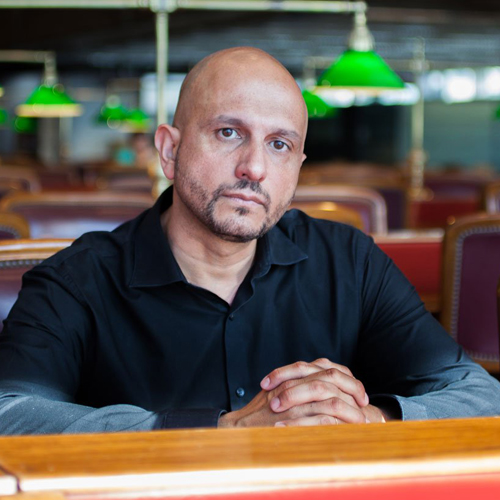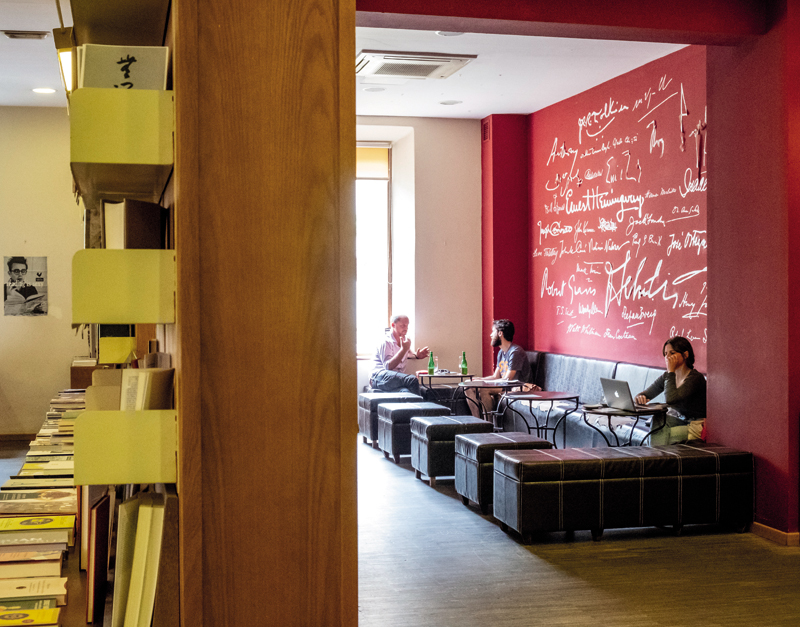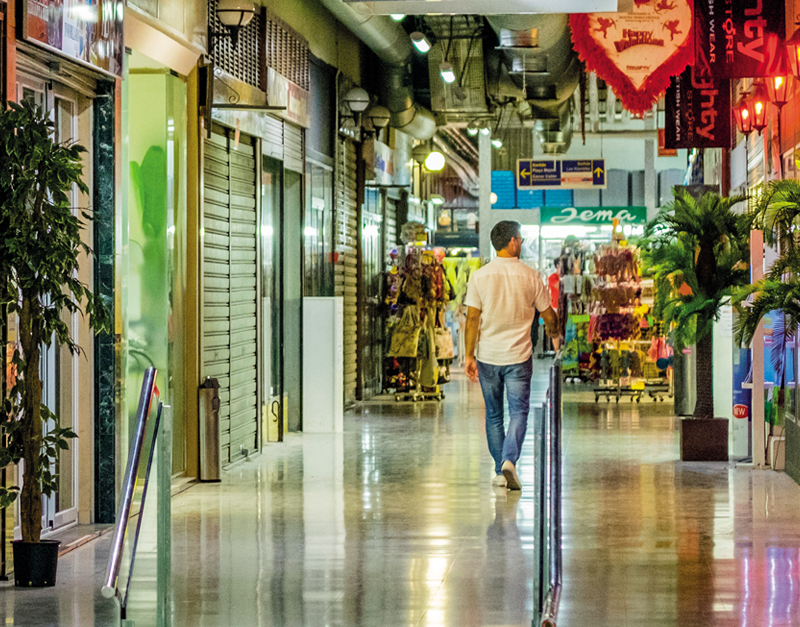All the passages in the world share a certain magic: they elicit a conversation between two spaces, two worlds. The writer Jorge Carrión invites us to travel in some “time machines” of this type in the city he calls his home.
To reach the sanctuary of Asclepius, the Greek god of medicine, it was necessary to cross a long gallery, the ceiling and walls of which were dripping wet: it was believed that the falling drops of sacred water cleansed the pilgrim’s spirit. Since ancient times, natural or man-made tunnels, bridges or rock-hewn stairs have been symbols of the passage between two worlds. In the modern city –a world in itself– passages have occupied this metaphorical space. One need only trace them in the poetry of French surrealism, in Walter Benjamin’s essays or in the short stories of Julio Cortázar to confirm this magic of interdimensional lifts. In El otro cielo (The Other Sky), for example, Cortazar’s narrator admits that “passages and galleries have always been my secret homeland”. It was at the Güemes Arcade in Buenos Aires that he left behind his adolescence. And thanks to the power of desire and of literature, he was transported to the legendary passages of Paris.
All the world’s cities have passages and in some cases more specifically arcades. Most of them form part of the functional structure of the metropolis, like back alleys or markets. But what interests me is the illustrious minority: the arcades which cross a city block –imitating the English model or the French passages–, giving rise to a microworld, a village, a garden or a shopping centre. They connect two very distinct realities, inviting one to travel.
I have visited Palma regularly over the last fifteen years. In my sentimental memory the most significant passage here is Passatge d’Antoni Torrandell. Is it a happy coincidence that it lies near the city’s old aqueduct? Aren’t passages the modern translations of the channels, bridges and torrents of the past? The passage links Plaça dels Patins to Carrer Oms. And it was the site of the Casatomada bookshop, run by the modern restless Horacio Alba (who ran a magazine of the same name that featured the writer Agustín Fernández Mallo, whose work is a ceaseless quest for passages between poetry and the novel, between the essay and science, between the mystic and consumer society, and between everything that can be connected to the critical imagination). Just as has been said by the literary critic and urban historian Nadal Suau, at Passatge d’Antoni Torrandell there had always been bookshops: “there was a succession of them over decades: Librería Logos (with its legendary literary gatherings), Signe Llibres, and lastly Casatomada”. The latter has closed down and its place has been taken by a record shop (Maisvinilo) and a photography studio (Jacobo Biarnés) which, in our very digital age, also have a certain old-fashioned charm.
It is not by chance that another passage –Passatge Santa Catalina de Siena –with a calling as a shopping gallery (called both Geranis Centre and Galería de los Geranios), is also the site of a bookshop. Indeed, for centuries these Parisian-style passages have accommodated establishments of this type. The Jaume de Montsó bookshop, which opened in 1976, is one of the city’s leading cultural spaces, thanks in part to its regular literary gatherings (the most recent one is the Last Thursdays tertulia). Lourdes Durán, another of Palma’s historians, says that during the Franco period “disfavoured books were kept in the basement, just like the erotic ones”. Now, by contrast, many books are on display outside the shop so passersby will be tempted to stop and take a look.
Both passages –like the gallery of the Plaça Major or the Velázquez shopping galleries– have an anachronistic spirit even though they’re just a few decades old. Their decadence is that of the 20th century: in the 21st century the shopping centres have radically changed their concept of shop layout, strolling and leisure. In Palma you come across another type of passage as well: the alleyways leading to the coast, which were often originally little roads running to the beach that eventually came to be lined by hotels and other buildings. It’s much more interesting, however, to follow the route of the city’s bookshops because a bookshop is a path connecting different worlds. I recommend three bookshops here in particular: Literanta, La Biblioteca de Babel, and Los Oficios Terrestres. The first two are also cafés, while the third –whose name is a homage to the great writer Rodolfo Walsh– is a poetic and feminist establishment in addition to a hairdresser’s. Distinct and distant worlds.
The secret tunnels of Bellver Castle
Every reality has its double, its mirror. The same is true of the medieval castle that dominates Palma’s horizon. When it began to be built, well into the 14th century, people were already working in a hive of caves that served as shelters and workshops (not surprisingly because in the summer it’s the most refreshing place in the city, with a mean annual temperature of 18ºC). During the Spanish Civil War, several hundred Republican prisoners were forced to expand the tunnels, rooms and galleries there. Between those two points in history, the fortress was the place of confinement of the enlightened writer Gaspar Melchor de Jovellanos, who said the labyrinth was “gloomy and foul-smelling”. It may be visited. According to legend, still more tunnels exist, including one leading secretly to the centre of Palma. That, my friends, is indeed an epic and unparalleled passage.
Los oficios terrestres
The motto of this bookshop in El Terreno quarter –celebrated as the place of residence of the writers Camilo José Cela and Robert Graves– is “Todo para la cabeza” (Everything for Your Head). Towards the end of the 20th century, the activist Xavier Abraham added a bookshop specialized in poetry to the traditional beauty salon. Later, at the beginning of this decade, the new owners further added comics and political literature, above all of feminist character. This is one of the world’s most beautiful and original bookshops. The reading chair, as could be expected, is a big green hairdressing chair. And of course the establishment has the shape of a passage: you enter through the hairdrying and haircut area and then keep going till you come to the shelves packed with books on the left.
Photos: Tolo Balaguer











